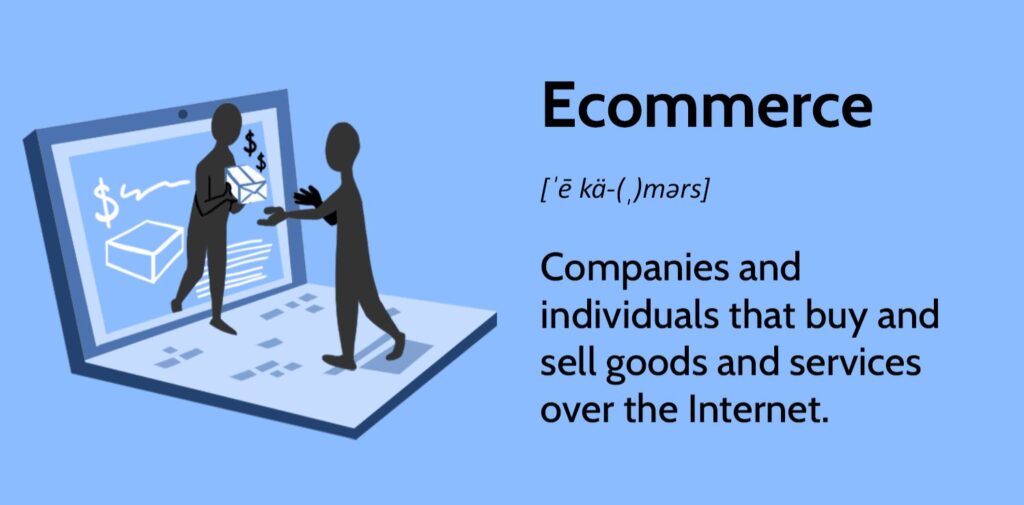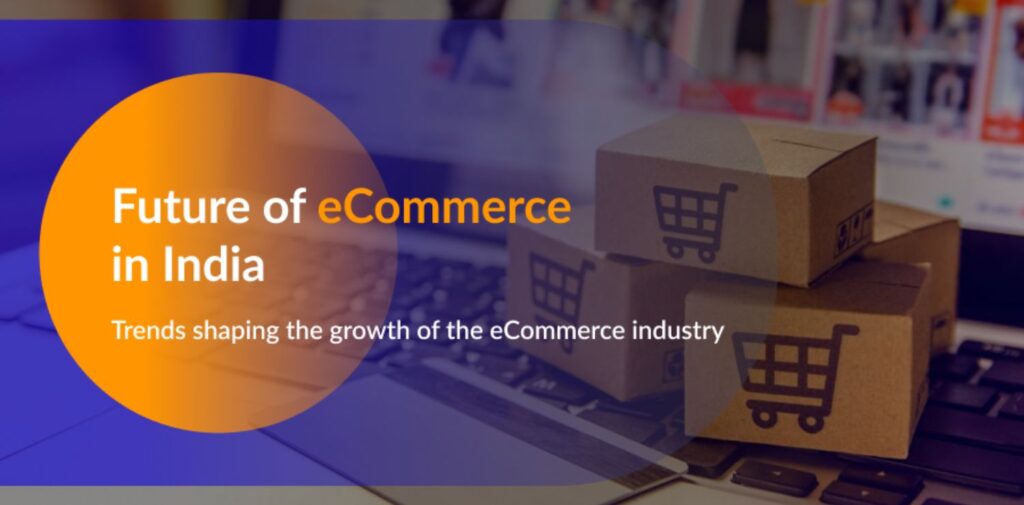E-commerce has become one of the most powerful forces shaping how people shop and buy things in India today. The world of shopping has gone through many changes over the past few years. Traditional markets, where people used to go to stores physically, have given way to online platforms where consumers can shop from the comfort of their homes. This shift has not only changed how people shop but also how products are sold and consumed. In this article, we will explore the role of e-commerce in reshaping the Indian retail landscape and how it has affected the way Indians buy and consume goods.

What is E-commerce?
E-commerce is the buying and selling of goods and services using the internet. It allows people to shop for products online instead of visiting a physical store. For example, websites like Amazon, Flipkart, and Snapdeal are popular e-commerce platforms in India. These platforms have made shopping easier and more convenient for people across the country.
The Growth of E-commerce in India
India’s e-commerce industry has grown rapidly in the last decade. The rise of smartphones, cheaper internet plans, and digital payment systems has made online shopping accessible to millions of Indians. Even in small towns and rural areas, people are now shopping online. According to reports, India has one of the fastest-growing e-commerce markets in the world.
The COVID-19 pandemic played a huge role in this shift. With physical stores closing during lockdowns and social distancing measures, people turned to online shopping more than ever before. This not only helped e-commerce companies grow but also showed the entire country how easy and efficient online shopping can be.
How E-commerce is Changing Indian Retail
In traditional retail, people have to travel to stores, choose products, and pay through cash or card at the counter. However, e-commerce has completely changed this process. Now, customers can browse through a variety of products from multiple sellers, compare prices, read reviews, and buy products directly from their homes. This convenience has attracted millions of people to online shopping.
More Options and Better Prices
One of the biggest advantages of e-commerce is the wide range of products available. When shopping online, consumers can choose from millions of items from different sellers. This variety is difficult to find in physical stores, especially in smaller cities and towns. People no longer have to settle for limited options or high prices. E-commerce platforms often offer products at lower prices due to fewer overhead costs compared to traditional retail stores.
Home Delivery and Convenience
In the past, shopping meant going to crowded markets or malls, and spending time choosing products. Now, with e-commerce, people can order anything they need, and it will be delivered to their doorsteps. This convenience saves a lot of time and effort. Whether it’s groceries, clothes, or electronics, people can have it all delivered to their homes with just a few clicks.

Changing Consumption Patterns
E-commerce is not just changing where and how people shop but also what they buy. Traditional shopping habits are being replaced by new trends influenced by online platforms.
- Shift Towards Online Shopping: Earlier, many people preferred shopping in physical stores because they could touch and feel the products before buying. However, with the rise of e-commerce, this has changed. Now, online reviews, product descriptions, and images provide all the information needed to make a purchase. This has led to a steady increase in online shoppers, especially among younger generations who are more comfortable with technology.
- Increased Spending on Lifestyle Products: Another major change in consumption patterns is the rise in spending on lifestyle products. E-commerce platforms offer a wide variety of lifestyle goods, such as fashion, beauty products, and home decor, which people can explore and purchase easily. As more Indians have access to the internet and smartphones, they are more likely to buy these types of products online.
- Popularity of Online Grocery Shopping: Another change in consumption habits is the growth of online grocery shopping. Platforms like BigBasket, Grofers, and Amazon Pantry have made it easier for people to buy groceries online. During the pandemic, many people started using these services, and even after the lockdowns, online grocery shopping continues to be popular. The convenience of getting fresh produce and daily essentials delivered to the door has become a preferred option for many families.
Impact on Small and Medium Businesses
E-commerce has not only benefited large retailers but also helped small and medium businesses (SMBs) grow. In the past, small businesses faced challenges in reaching customers beyond their local areas. But now, online platforms allow them to reach a wider audience, including people from different states and cities. This has opened up new opportunities for small shop owners, artisans, and local manufacturers to showcase their products to a much larger customer base.
For example, many small businesses are now selling their goods on platforms like Amazon and Flipkart. This shift has helped them grow, increase sales, and even compete with larger brands. E-commerce has leveled the playing field for small businesses and has empowered local sellers.
The Role of Technology in E-commerce
Technology has played a big part in the rise of e-commerce in India. Internet access, smartphones, and digital payment options have made shopping online easy and safe. Let’s take a closer look at how these technological advances have helped e-commerce grow:
- Smartphones and Internet Access: India has one of the largest numbers of smartphone users in the world. Smartphones have made it easier for people, even in remote areas, to access e-commerce platforms. The availability of affordable internet data has further made online shopping more accessible to the masses. People can now browse products, make purchases, and track their orders using their phones.
- Digital Payments: Digital payments have made transactions easier and more secure. Services like Paytm, Google Pay, and UPI (Unified Payments Interface) have made it possible for people to pay for their purchases without cash. Digital payments have increased trust in online shopping, as people now have multiple options for making payments.

The Future of E-commerce in India
The future of e-commerce in India looks very promising. The number of internet users is only expected to grow, and more people will adopt online shopping. With the rise of new technologies like artificial intelligence (AI), machine learning, and augmented reality (AR), the online shopping experience will continue to improve. These technologies will make shopping even more personalized and fun.
For example, AR can help customers visualize how a piece of furniture will look in their home before buying it. AI can recommend products based on previous shopping behavior, making the process quicker and more convenient.
Conclusion
In conclusion, e-commerce is playing a key role in reshaping Indian retail and consumption patterns. It has made shopping easier, faster, and more convenient for millions of people across India. With a wide range of products, better prices, and home delivery options, e-commerce has transformed the way people shop. It has also provided small businesses with new opportunities to grow and reach customers from across the country.
The rise of e-commerce has not just impacted how we shop, but also how we consume. It has changed our habits, influenced what we buy, and created new opportunities for businesses. As technology continues to advance, we can expect e-commerce to play an even bigger role in shaping the future of Indian retail. Whether it’s buying groceries, clothes, or electronics, e-commerce is here to stay and will continue to revolutionize how India shops.




